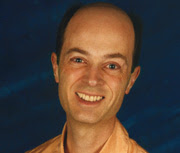Shiva Ratri is the most auspicious night of the year for worshiping of Lord Shiva. This year it falls on Thursday, March 6, 2008.
In order to understand the significance of a Hindu deity like Shiva, we need a little background. As with most religious traditions, God is often described as omnipresent, omniscient, infinite, changeless and other terms which convey that God is really beyond anything we can imagine or put into words. While many traditions prescribe thinking of God in one way, Hinduism has thought that if God (usually called Brahman in philosophical discussion such as this) is Infinite, then its (Brahman is beyond gender) manifestation could certainly be many, and of both genders. Each manifestation is like one disguise, costume, or aspect of God. But each manifestation has the other aspects in it. If you see an actor in one of his many roles, you are still seeing the whole actor - he didn't leave part of himself at home. So devotees of one aspect or deity of God begin to see, recognize, all aspects within their chosen favorite aspect. But a Hindu might still choose to think of God in many ways depending on the time of year or the circumstances of life.
Shiva is a good example of this. While text books will often describe Shiva as the God of Destruction in the "Trinity" of Brahma, Vishnu, and Shiva, this is a very limited view. This view does give clarity to creation, preservation, and destruction as a simple way to divide up the necessary functions of God. But it is much too restrictive for devotees of Vishnu or Shiva. For example, devotees of Vishnu will say that Brahma is created by Vishnu, thus seeing the primary creative act as coming from Vishnu.
Shiva is worshiped in several forms and the "energy" or character of his aspect is known through various stories.
The Shiva Nataraj, or the dancing Shiva, depicts all three major functions of God in the Lord Shiva himself. He is creating with the sound of the damaru (small drum) The creation is preserved by Shiva holding down evil forces with his foot. But the whole cosmic cycle is consumed in a circle of flames. Thus the unending cycle of creation, preservation, and destruction continues around and around. He dances the rhythm of the cosmic cycles.
Shiva is sometimes depicted as the perfected Yogi, meditating with complete control over body and mind in the Himalayas. Thus he becomes a role model for meditators and renunciates.
Shiva is sometimes depicted as an elongated egg-shaped or pillar like stone sitting in a round holder. This belongs to the very important and common archetypal image of a circle (sometimes a ring, or in three dimensions a sphere) and a rod to represent the creative forces of the universe. When the end of a rod is dipped into a smooth surface of water (or if a small pebble is dropped into the water), it creates concentric circles of ripples. This symbolizes the beginning of creation through vibration - the bringing forth of manifestation from the chaos or the unfathomable primordial oneness. It is interesting to note that mathematically, the zero and one are a circle and a line (rod). They are the basis of our number system and our binary computer code.
He is given the role of preserver when, in one story, he saves the world from destruction from poison by swallowing and holding the poison in his own throat.
Shiva can also be seen as the ideal husband of Uma (Parvati).
If a devotee chooses to see the manifesting aspect of God as feminine, then Shiva is seen as lying motionless, representing the absolute (Brahman) upon which the feminine aspect stands.
Thursday, February 21, 2008
Subscribe to:
Post Comments (Atom)

No comments:
Post a Comment